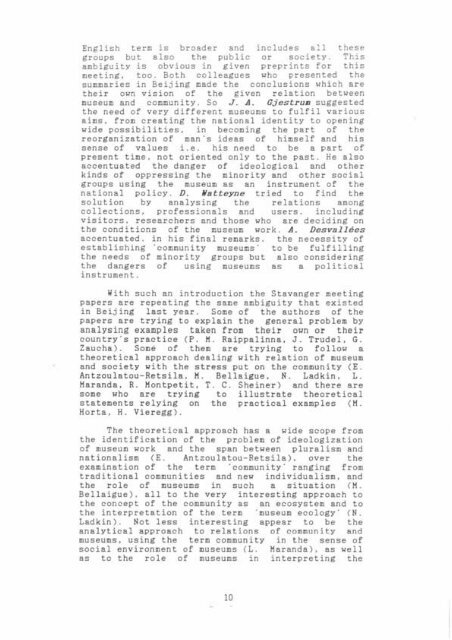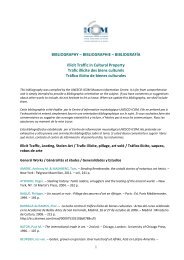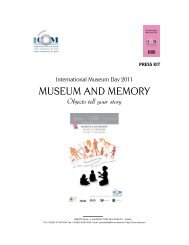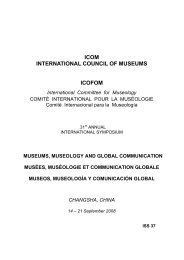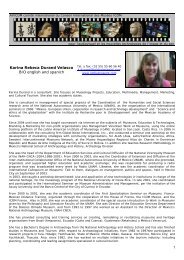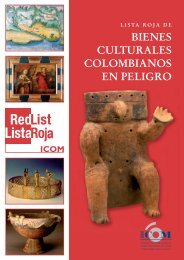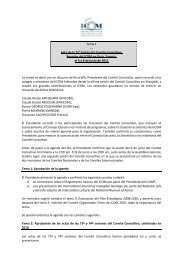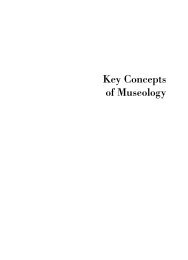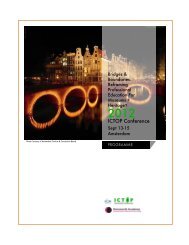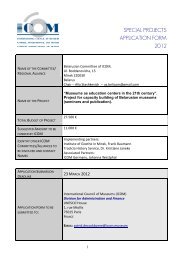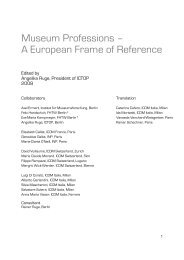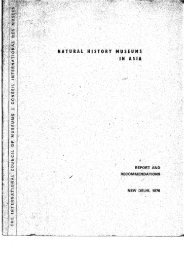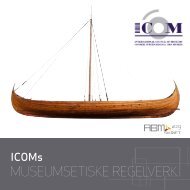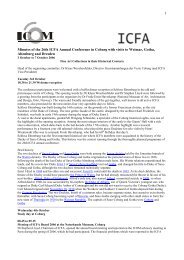ISS 25 (1995).pdf - The International Council of Museums
ISS 25 (1995).pdf - The International Council of Museums
ISS 25 (1995).pdf - The International Council of Museums
You also want an ePaper? Increase the reach of your titles
YUMPU automatically turns print PDFs into web optimized ePapers that Google loves.
English term is broader and includes all these<br />
groups but also the public or society. This<br />
ambiguity is obvious in given preprints for this<br />
meeting, too. Both colleagues wh o presented the<br />
summaries in Beijing made the conclusions which are<br />
their own vision <strong>of</strong> the given relation between<br />
museum and community. So J. A. Gjestrun suggested<br />
the need <strong>of</strong> very different museums to fulfil various<br />
aims, from creating the national identity to opening<br />
wide possibilities, in becoming the part <strong>of</strong> the<br />
reorganization <strong>of</strong> man ' s ideas <strong>of</strong> himself and his<br />
sense <strong>of</strong> values i.e. his need to be a part o f<br />
present time. not oriented only to the past. He also<br />
accentuated the danger <strong>of</strong> ideological and other<br />
kinds <strong>of</strong> oppressing the minority and other social<br />
groups using the museum as an instrument o f the<br />
national policy. D. Natteyne tried to find the<br />
solution by analysing the relations among<br />
collections, pr<strong>of</strong>essionals and users. including<br />
visitors. researchers and those who are deciding on<br />
the conditions <strong>of</strong> the museum work . A. Desvallees<br />
a ccentuated. in his final remarks. the necessity <strong>of</strong><br />
establishing 'community museums to be fulfilling<br />
the needs <strong>of</strong> minority groups but also considering<br />
the dangers <strong>of</strong> using museums as a political<br />
instrument .<br />
With such an introduction the Stavanger meeting<br />
papers are repeating the same ambiguity that existed<br />
in Beijing last year . Some <strong>of</strong> the authors <strong>of</strong> the<br />
papers are trying to explain the general problem by<br />
analysing examples taken from their own or their<br />
country's practice (P. M. Raippalinna, J. Trudel, G.<br />
Zaucha ). Some <strong>of</strong> them are trying to follow a<br />
theoretical approach dealing with relation <strong>of</strong> museum<br />
and society with the stress put on the community (E.<br />
Antzoulatou-Retsila, M. Bellaigue, N. Ladkin, L.<br />
Maranda, R. Montpetit, T. C. Sheiner) and there are<br />
some who are trying to illustrate theoretical<br />
statements relying on the practical examples (M.<br />
Horta, H. Vieregg) .<br />
<strong>The</strong> theoretical approach has a wide scope from<br />
the identification <strong>of</strong> the problem <strong>of</strong> ideologization<br />
<strong>of</strong> museum work and the span between pluralism and<br />
nationalism (E. Antzoulatou-Retsila), over the<br />
examination <strong>of</strong> the term 'community' ranging from<br />
traditional communities and new individualism , and<br />
the role <strong>of</strong> museums in such a situation ( M.<br />
Bellaigue), all to the very interesting approach to<br />
the concept <strong>of</strong> the community as an ecosystem and to<br />
the interpretation <strong>of</strong> the term ' museum ecology' ( N.<br />
Ladkin) . Not less interesting appear to be the<br />
analytical approach to relations <strong>of</strong> community and<br />
museums, using the term community in the sense <strong>of</strong><br />
social environment <strong>of</strong> museums ( L. Maranda ), as well<br />
as to the role <strong>of</strong> museums in interpreting the<br />
10


